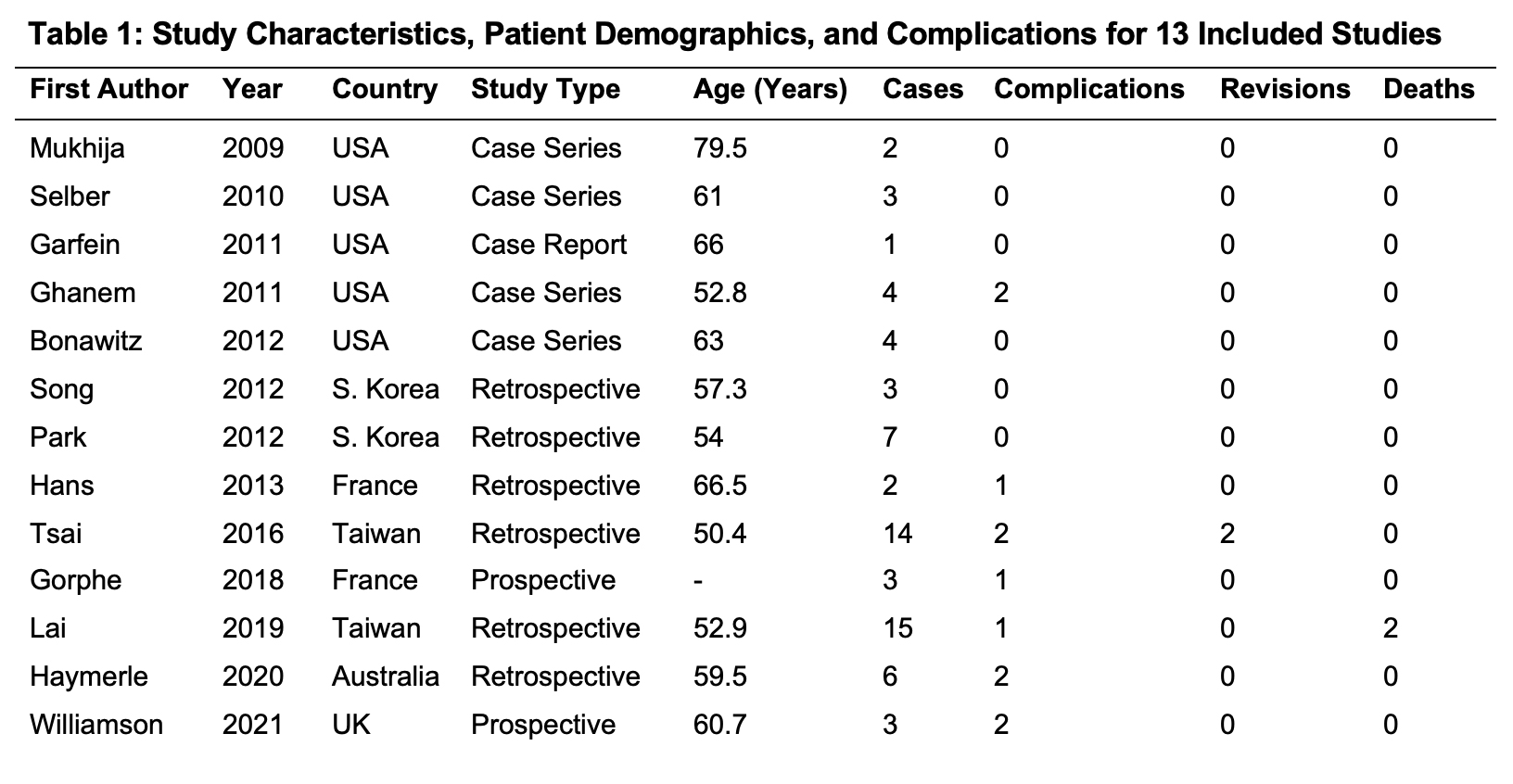Assessing Complications in Robot-Assisted Intraoral Free Flap Reconstruction: A Systematic Review
Rafael Felix P Tiongco1, Joseph S Puthumana MD2, Anika Kumar1, Nishka Kumar1, Siam K Rezwan1, Iman F Khan, MS, MPH1, Victor J Yu MS, Stella M Seal MLS3, Carisa M Cooney MPH1, Damon S Cooney MD, PhD1
1Department of Plastic and Reconstructive Surgery, Johns Hopkins University School of Medicine, Baltimore, MD 2Division of Plastic and Reconstructive Surgery, Eastern Virginia Medical School, Norfolk, VA 3William HI Welch Medical Library, Johns Hopkins University School of Medicine, Baltimore, MD
Background: Free flap reconstruction is indicated after large tumor extirpations of the oral cavity. Use of transoral robotic surgery (TORS) by the resection team may improve outcomes and decrease the need for lip or mandible splitting access. However, TORS use may complicate the reconstruction unless it also employs a robotic approach. Robot-assisted free flap reconstruction (RAFFR) is not well-studied. We therefore performed a systematic review of TORS with intraoral RAFFR to characterize and compare its complication rate with conventional free flap reconstruction (CFFR).
Materials and Methods: This systematic review was performed under PRISMA guidelines. Included were original observational studies, case reports, and case series in English on intraoral RAFFR. Excluded were those on CFFR, local flaps, or extraoral reconstruction. Patient demographic, intraoperative, and complication data were extracted. We used R Studio 4.1.2 for analysis using descriptive statistics.
Results: Of 5003 records identified from PubMed, Embase, Scopus, Web of Science, and the Cochrane Collaboration, we included 13 articles that reported on 67 cases of TORS with intraoral RAFFR. Median age was 60 (IQR 54, 64) years, defect size was 12 (IQR 9.8, 22.5) cm², and follow-up was 11.5 (IQR 7.0, 12.0) months. 69.6% of patients were male and 30.4% were female. The most common pathology was squamous cell carcinoma (81.1%) and the most common location was the tongue (41.2%). The most common tumor stage was T2 (31.3%) and nodal involvement was N2 (11.9%). There was one metastatic tumor (1.5%). The most common flap was the radial forearm free flap (n=51, 76.1%). RAFFR was used for flap inset (100%) and hand-sewing vessels (50.1%). Median robotic-assisted anastomosis time was 98.8 (range 47.5-150.0) minutes for arterioles and 37.2 (range 37.2-37.2) minutes for veins. Median RAFFR inset plus anastomosis time was 310.0 (range 240.0-673.0) minutes and operating room time was 534.0 (range 390.0-1126.3) minutes. Overall complication rate was 19.4% and included surgical site infection (n=2, 3.0%), respiratory infection (n=2, 3.0%), flap failure (n=1, 1.5%), hematoma/seroma (n=3, 4.5%), dehiscence (n=2, 3.0%), hemorrhage (n=1, 1.5%), and revisions that were unplanned or within 30 days (n=2, 3.0%).
Conclusions: Our systematic review of TORS resection followed by intraoral RAFFR found a complication rate of 22.4%, a rate almost one-half lower than a large retrospective study reporting on conventional extirpation with intraoral CFFR (36.1%). Additional prospective studies of TORS followed by intraoral RAFFR are needed to better elucidate major and minor complication rates and longitudinal patient outcomes.
Back to 2022 Posters

